When it comes to rentals, subleasing vs subletting can be considered similar processes. However, they actually have distinct purposes, depending on several factors. One could be better in certain situations compared to the other. But what makes them different?
What Is Subleasing?
You can describe subleasing as the practice of rerenting a property by the main tenant to a third party for all or a part of the existing lease contract. However, this practice may or may not be allowed, depending on the original lease agreement. It’s also usually subject to restrictions, depending on the jurisdiction.
Additionally, the original renter needs to know that this practice doesn’t end their responsibilities on the original lease contract. They are still responsible for paying for their rent and for any repairs and damages to the property.
What Is Subletting?
When a property is sublet, the landlord rents it out to a new tenant. The new tenant has direct contact with the landlord and pays rent directly to the landlord. This usually happens if the original renter can no longer occupy the space and is out of the picture. As such, the subtenant will be responsible for the leased property.
Key Differences: Subleasing vs Subletting
Is sublet and sublease the same thing? Many people use subleasing and subletting interchangeably, but they have several key differences. Understanding the differences between subleasing and subletting is crucial for choosing the right option. Here are the primary distinctions:
 Occupancy and Responsibility
Occupancy and Responsibility
In subleasing, the original renter may still be living in the property with the subtenant. They may also lease just a portion of the home. With this, the sublessor can maintain some control over the property while sharing the space with a new tenant.
On the other hand, the original renter usually doesn’t reside in the sublet property at all. Given this, the subtenant now takes on full responsibility during the said period.
Lease Agreement
In a sublease, the original agreement between the first renter and landlord stays. The subtenant usually doesn’t have any contact with the landlord. Instead, the original renter serves as the middleman who needs to ensure that the subtenant follows lease terms.
On the other hand, a landlord and the new renter usually have a separate contract for sublet arrangements. This helps simplify the arrangement and puts all responsibility on the new tenant.
Financial Arrangements
If there is a sublease, the subtenant pays the sublessor rent money, which the sublessor will use to pay the landlord.
Meanwhile, since a subtenant has direct contact and direct responsibilities in a sublet property, they will have to pay directly to the landlord.
Pros and Cons of Subleasing vs Subletting
Of course, both subleasing and subletting arrangements have pros and cons. Here’s some of them:
Pros of Subleasing
- Maximizes Rental Space: This arrangement lets tenants rent out parts of the space, helping them become more flexible with unused portions of their space. It’s one of the best ways to maximize properties with extra rooms or shared living spaces.
- Cost-sharing for Tenants: Through this arrangement, you can split the rental money with another person. Sharing the rent with a subtenant helps reduce the original renter’s financial burden.
- Provides Short-term Solutions: Subleasing can be helpful for temporary problems, such as cases when a roommate moves out or when a tenant needs additional income for a short period.
Cons of Subleasing
- Liability Remains on the Sublessor: Technically, the original renter is the only one responsible for the lease agreements. This means they’re also responsible for any damages done by the subtenant. This can create financial and legal risks if issues happen to surface.
- Legal Complexities: Trying to get this arrangement approved based on the original lease terms can be tricky. However, non-compliance may lead to severe consequences, such as eviction or fines.
- Disputes May Still Happen: Disputes about payment and money can happen between the sublessor and the subtenant. This is especially common when rent payments and other obligations for both parties are not discussed clearly.
Pros of Subletting
- Landlord Can Vet for New Tenant: Unlike subleasing, this arrangement usually involves the landlord approving a lease transfer to another renter. With this, the landlord has the opportunity to scrutinize possible tenants via background checks to make sure they are good occupants.
- Long-Term Stability: Subletting helps avoid any unexpected vacancies for the property. It helps landlords avoid any gaps in rental income.
- Potential Profit: Subletting can help landlords get the opportunity to renegotiate rent terms for new tenants. For example, if market rates have gone up since the original lease, the landlord can increase the rent for the new tenant.
Cons of Subletting
- Lease Turnover Involves More Work: Subletting will have to involve the landlord. So, with a new lease, the landlord needs to process it from scratch. It involves screening for new renters, updating the contract, and collecting security deposits again, among others. That’s more administrative work fo rthe landlord.
- Potential for Vacancy if No Replacement is Found: In an ideal scenario, subletting allows for a seamless transition, helping minimize any property vacancy. However, it may be challenging to find suitable renters, and the unit could remain vacant longer than expected.
- Risk of Lower-Quality Tenants: If the original tenant is rushing to leave, the landlord may be forced to transact with a tenant who may be less suitable than what the landlord would expect.
Landlord Considerations: Should They Allow It?
For property owners, allowing subleasing or subletting arrangements will depend on numerous factors. These considerations may include lease terms, local laws, and tenant reliability. Understanding these considerations can help landlords make informed decisions.
Lease Terms and Permissions
A lot of lease agreements explicitly outline whether subleasing or subletting is allowed. Homeowners must ensure that they have clauses clearly indicating their decision on these arrangements to prevent any loopholes. Having clear lease terms also protects landlords in disputes.
 Tenant Screening
Tenant Screening
Landlords need to vet potential renters properly to minimize risk. They should perform background checks and ask for references to ensure prospective tenants are reliable and can fulfill lease-related responsibilities.
Legal Compliance
Depending on the location, some states may have laws that prohibit or limit subleasing vs subletting. Homeowners should reach out to legal experts to understand their rights and responsibilities. By complying with state regulations, both parties ensure the arrangement remains enforceable.
Financial Implications
Both arrangements have financial implications for the landlord. Before allowing these arrangements, homeowners must factor in their effects on collecting rent. Although you can take steps to ensure that renters have the ability to pay rent on time. As a result, this will help mitigate any financial risk. Additionally, having an open line of communication between all parties may help prevent any disputes.
Control Over the Property
By permitting subleases or sublets on your property, you also introduce more parties involved. This may complicate how you run things, including property management and maintenance. Therefore, landlords will need to consider both pros and cons before deciding to allow these arrangements.
When Flexibility Meets Responsibility
You may find the differences between subleasing vs subletting confusing. But, if you’re involved in such arrangements, knowing them is needed.
Do you need a property management company to help with subleasing or subletting your property? Check out our online directory to find one today!
RELATED ARTICLES:



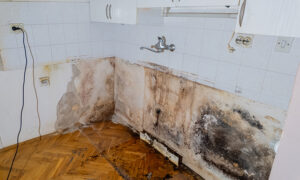 Plumbing Issues
Plumbing Issues Communicate with the Tenant
Communicate with the Tenant Vandalism
Vandalism 2. Shared Workspaces
2. Shared Workspaces While city centers are still sought, renters want more accessible outdoor spaces. This is because many remote workers still want a change of scenery and fresh air. They may be unable to do that while being cooped up in their rooms. However, if their immediate neighborhood can provide that, it’s a big plus.
While city centers are still sought, renters want more accessible outdoor spaces. This is because many remote workers still want a change of scenery and fresh air. They may be unable to do that while being cooped up in their rooms. However, if their immediate neighborhood can provide that, it’s a big plus. 11. Amenities
11. Amenities 1. Installation
1. Installation 6. Repairing and Replacing Malfunctioning Smoke Alarms
6. Repairing and Replacing Malfunctioning Smoke Alarms Landlords may trust the old tenant, but that doesn’t mean the new tenant is just as reliable. That’s why we recommend going through the official process of adding a tenant to the lease instead of simply letting someone new move in. It allows the landlord to run a background check and ensure the new tenant meets the usual requirements.
Landlords may trust the old tenant, but that doesn’t mean the new tenant is just as reliable. That’s why we recommend going through the official process of adding a tenant to the lease instead of simply letting someone new move in. It allows the landlord to run a background check and ensure the new tenant meets the usual requirements. 4. Screen the Potential Tenant
4. Screen the Potential Tenant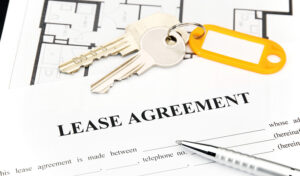 If there are a lot of changes the landlord wants to implement, then a new lease agreement may be the better option. This avoids having to create a long list of addendums that may only confuse the parties involved.
If there are a lot of changes the landlord wants to implement, then a new lease agreement may be the better option. This avoids having to create a long list of addendums that may only confuse the parties involved. The first principle talks about the safety, affordability, and habitability of housing. While the blueprint does not specifically restrict rent increases, it states that any increases should be reasonable, fair, and transparent.
The first principle talks about the safety, affordability, and habitability of housing. While the blueprint does not specifically restrict rent increases, it states that any increases should be reasonable, fair, and transparent. Landlords should use
Landlords should use  1. There Are Health Concerns from Secondhand Smoke
1. There Are Health Concerns from Secondhand Smoke Finally, smoking makes landlords more vulnerable to potential liability. There have been many cases in the past where a tenant sued a landlord for permitting smoking. The lawsuits were primarily based on two legal grounds: nuisance and an uninhabitable home.
Finally, smoking makes landlords more vulnerable to potential liability. There have been many cases in the past where a tenant sued a landlord for permitting smoking. The lawsuits were primarily based on two legal grounds: nuisance and an uninhabitable home. What About E-Cigarettes and Vaping?
What About E-Cigarettes and Vaping? Cleaning is essential if you want to attract tenants. Showing prospects around a dirty place sends them a signal that the landlord doesn’t care enough to keep the property clean. It also encourages tenants to look after the property with the same level of care.
Cleaning is essential if you want to attract tenants. Showing prospects around a dirty place sends them a signal that the landlord doesn’t care enough to keep the property clean. It also encourages tenants to look after the property with the same level of care. 5. Property Showings
5. Property Showings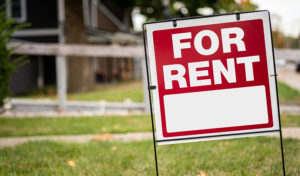 7. Vacancy
7. Vacancy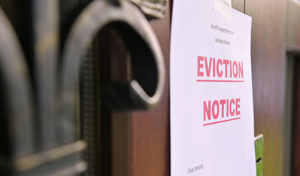 Expiry. Tenants move all the time. This can be due to a number of reasons, such as a new job or to be closer to family. As such, once their lease expires, they will simply choose not to renew.
Expiry. Tenants move all the time. This can be due to a number of reasons, such as a new job or to be closer to family. As such, once their lease expires, they will simply choose not to renew.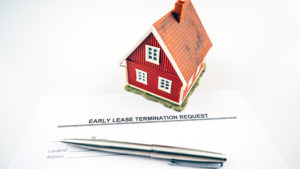 Federal law permits this in three instances:
Federal law permits this in three instances: The federal
The federal 
 After settling on a provider, it is time to tweak your plan. You will have to choose between replacement cost or actual cash value coverage. It is best to go with replacement cost coverage.
After settling on a provider, it is time to tweak your plan. You will have to choose between replacement cost or actual cash value coverage. It is best to go with replacement cost coverage. Company
Company